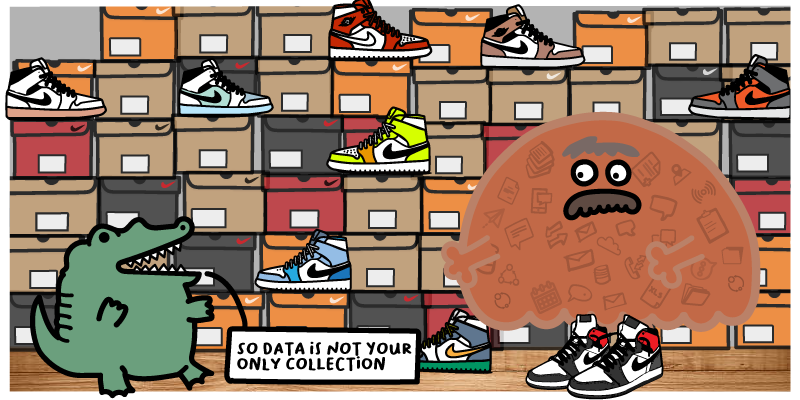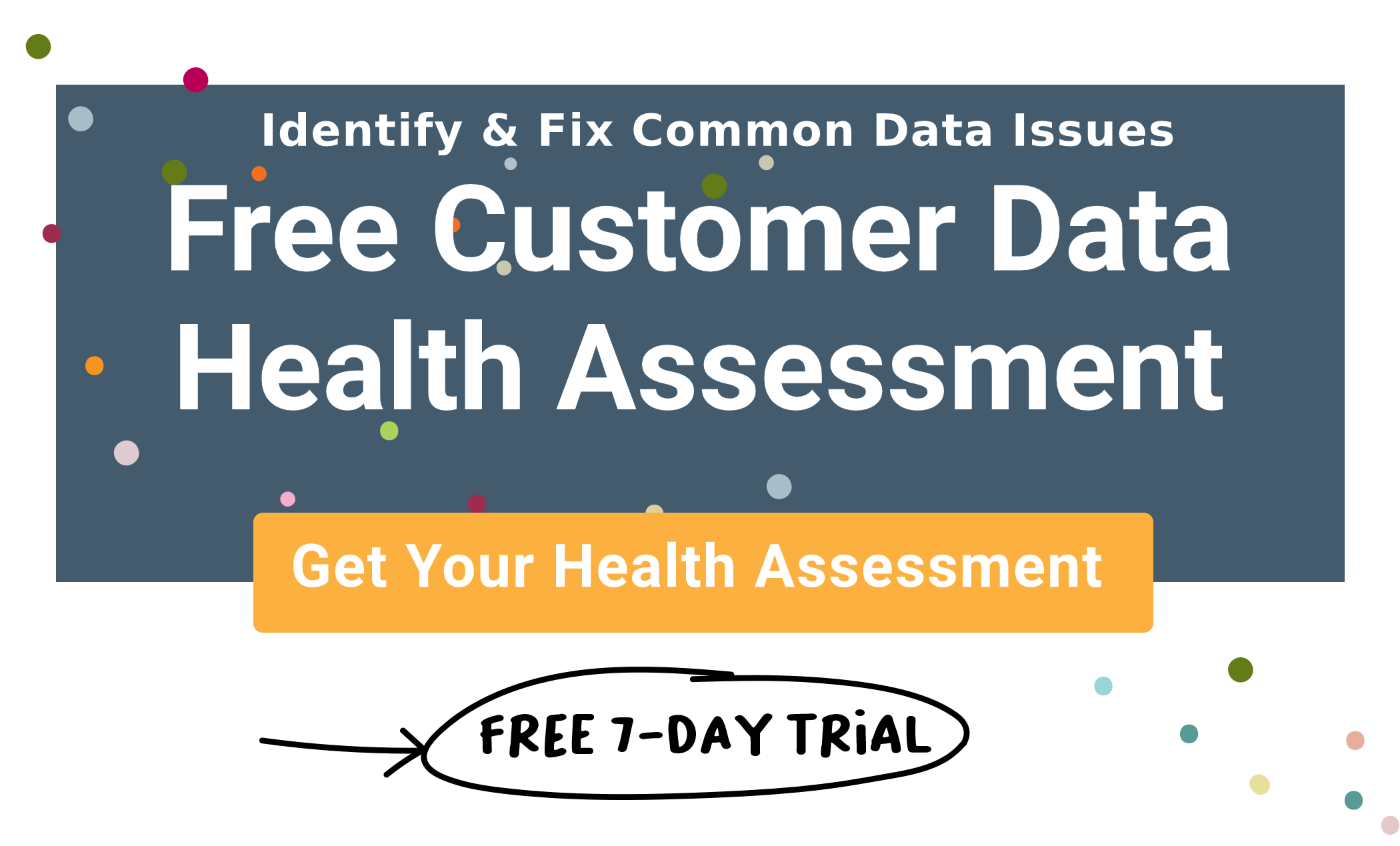In the modern age of business, data is power. Your prospect and customer data plays a key role in how companies are able to engage with their prospects. The data collection methods that you use are critical to how we can personalize our marketing automation, deliver important information to sales teams, and genuinely provide a better experience to our customers. Gathering customer data must be a top priority for any business.
But simply gathering data in itself is not necessarily helpful. The data collection techniques that you utilize are critical as well. That data needs to have the right context and structure to be usable, otherwise, it is just a random set of facts with no real direction for how it may be used in a business setting. Data with the proper context will help you to make real, data-backed decisions that drive your company forward.
Let’s dive a bit deeper into why we collect data and the importance that it can have on business processes.
Why Collecting Data Is Important
Data collection is critical for businesses of any size. Data collection is the “process of gathering and measuring information on variables of interest that enables one to answer questions, test hypotheses, and evaluate outcomes,” according to the Office of Research Integrity.
In the context of business, this provides us with several outcomes that are beneficial, including:
- Data collection helps you learn more about your customers.
- Understand what is important to your customers on a deeper level.
- Segment your prospects and customers to deliver better automated marketing campaigns that speak more directly to their biggest concerns as individuals and organizations.
- Improves decision making by facilitating data-backed decisions.
- Helps to improve reporting and forecasting allowing for more accurate long-term outlooks within an organization.
- Knowing your customers lets you know where to focus your efforts moving forward. This helps you to increase your revenue and deliver better experiences.
- The data collection techniques you utilize play an important role in your ability to collect pertinent data within your organization.
To understand the different data collection methods and how they fit into the bigger picture, let’s dive into the differences between quantitative and qualitative data collection.
Primary Data Collection vs. Secondary Data Collection
Primary data collection refers to data collected through first-hand research. This includes surveys and focus group discussions that you run.
Secondary data collection is data and information that has been collected previously by another source. For example, if you compiled data from the internet, newspaper, and other media source,s that would be secondary data collection.
Your objectives define whether primary or secondary data collection is appropriate. For example, if a company were to try to determine whether entering the running shoe market in Argentina was a smart choice — they would likely rely on secondary data to help inform their decision, rather than conducting their own primary research.
Quantitative Data Collection
Quantitative data collection deals with measurable data that can be expressed by numbers of figures showing a quantity. In short — any data field that contains numbers that represent a value. Often quantitative data is used to represent things like size, timeframes, amounts, prices, etc.
Typically quantitative questions are asked to learn a specific thing from a prospect or customer. This data is often used to test different models, measure trends, or segment customers.
For instance, in a SaaS company, you may use quantitative data to measure how your prospects have used your solution and what areas your product may need improvement in, how your customers feel about the product, or identify opportunities that will resonate with your existing customer base.
Quantitative data collection methods often use mathematical calculations and may include algorithms — such as an NPS score.
Quantitative data collection is typically cheaper when compared to qualitative and takes less time to gather that kind of data. Additionally, quantitative data is often standardized or normalized and requires less data cleaning. For fields like "Job Title," where there are too many possibilities to realistically include in a dropdown, you may still want to give the user free reign. In those situations, Insycle can help you to explore and learn about the values and then to normalize and standardize them for later usage.
Qualitative Data Collection
Differing from quantitative data, qualitative data collection methods do not deal with numbers, but rather is descriptive. Qualitative data is often not as measurable and suffers from common data quality issues more frequently than quantitative data. That is because qualitative data collection methods are more likely to be prone to human-error and open-ended questions can make using that data difficult.
Examples of qualitative data include answers to interview or survey questions. It often provides answers to questions like “why” and “how?”
Collecting this kind of data differs as well. Often, you use open-ended questions to receive descriptive answers. Answers often have no numerical value. While this does make the data harder to deal with (because the data is more likely to be poorly formatted or contain errors), it also provides a lot of valuable insight into an audience’s behavior and their individual needs.
Qualitative data is useful for identifying opportunities and problems. It can also be used to explore certain customer segments with a lot more detail and accuracy than you could using numbers alone.
Qualitative data is often non-quantifiable. It can be subjective but allows for a deeper level of understanding of the subjects the data is about.
Common qualitative data collection methods for qualitative data including surveys, questionnaires, focus groups, and interviews.
Data Collection Methods
Let’s look at some of the common digital data collection methods companies use to collect data on prospects and customers.
1. Surveys & Forms
Surveys are a time-tested way to collect data from your prospects and customers. They can be both closed-ended or open-ended, depending on the needs of the particular survey.
A closed-ended survey asks questions and provides predefined answers that customers can choose. These may be categorical (yes or no questions) or based on numerical or ratio questions. Categorical questions may also include multiple-choice questions, dropdown questions, or checkbox questions with pre-defined information for the user to choose.
Closed-ended surveys are helpful for collecting data that is easily analyzable. Determining what percentage of respondents answered a question a certain way can be helpful for analyzing groups of people. That type of analysis is not so easy with open-ended surveys.
Open-ended surveys give respondents much more leeway in how they answer questions. There are no predefined answers. There may be expected answers, based on your knowledge of who you are surveying. Open-ended surveys give them the freedom and flexibility required when answering.
When you create open-ended surveys, the length and complexity of the questions also plays a critical role. Try to determine the optimal number of questions and the correct answer length (single line vs. text box) to ensure you are prompting your users to answer in the right way.
Open-ended surveys typically deliver qualitative data while closed-ended surveys deliver quantitatively.
2. Interviews
One-on-one interviews are a great way to collect data from customers or conduct qualitative research. In interviews, the interviewer is collecting data directly from the interviewee. This approach is much more personalized and can sometimes result in better data collection. Often, interview data is highly-personalized and can provide unique insights that you would otherwise not have access to through traditional surveys.
Interviews can range in formality. They can be conversational or more structured. They can even be off-the-cuff chat sessions that can still provide valuable insights. Some companies conducting interviews regularly opt for a more structured approach, while others want the interviewee to feel less restrained and more comfortable.
The type of interview you conduct will depend on several factors, including the type of information you want to collect, the type of experience you want the interviewee to have, and how many of them you’ll need to conduct.
3. Focus Groups
Focus groups are a popular method for collecting data as well. Similar to the interview data collection method, focus groups aren’t conducted in a one-on-one setting, but rather through a group discussion. If you don’t have the resources to conduct one-on-one interviews with your audience, focus groups can help you to collect a wide range of data and opinions. Despite some flaws in the approach, focus groups will always be a popular data collection method.
Most focus groups will have 3-10 people in them, with one person moderating the discussion. How the focus group is handled will depend on your research goals and what the data will be used for. There will likely be some points of commonality for people in the focus group, but sometimes people can share opinions that will sway others. That means that the opinions of people within a focus group can change over the course of an interview.
Most often, focus groups are a tool used for collecting qualitative data, not quantitative. They are excellent for collecting opinions and not always the best for collecting facts.
4. Observation
Observing your customers and prospects is another great way to collect data. Direct observation represents a passive way to collect qualitative data. Those conducting the observation may participate while they collect the data or simply observe.
For instance, if you recorded your product demos, you could collect observational data from the person conducting the demo (participating) or allowing a third-party to view the product demo video and draw their own conclusions.
Direct observation is prone to bias when the observer is participating. They develop their own views of situations and may let those views bias the type of information that they collect. Having the observer present can also impact the behavior of the subjects that they are observing, which can skew results. Observation is a powerful primary data collection method but is not without its inherent issues.
Regardless of which data collection tools that you use for collecting data, being able to effectively filter and update that data will play a critical role in the overall success of your customer data management plan. Your collection method — whether qualitative or quantative collection method — must support your broader data collection goals.
Quality Data Collection
No matter what data collection method that you choose to learn more about your customers and prospects, it’s important that you understand that the data you collect is only valuable if the data is consistent, standardized, and high-quality. Different primary data collection methods may be right for different types of organizations.
Insycle is a modern customer data management solution, helping companies clean, maintain, and utilize the data they collect to grow their business.
Fill out the form below to begin generating your free Customer Data Health Assessment, pinpointing and fixing common data errors in your CRM.






